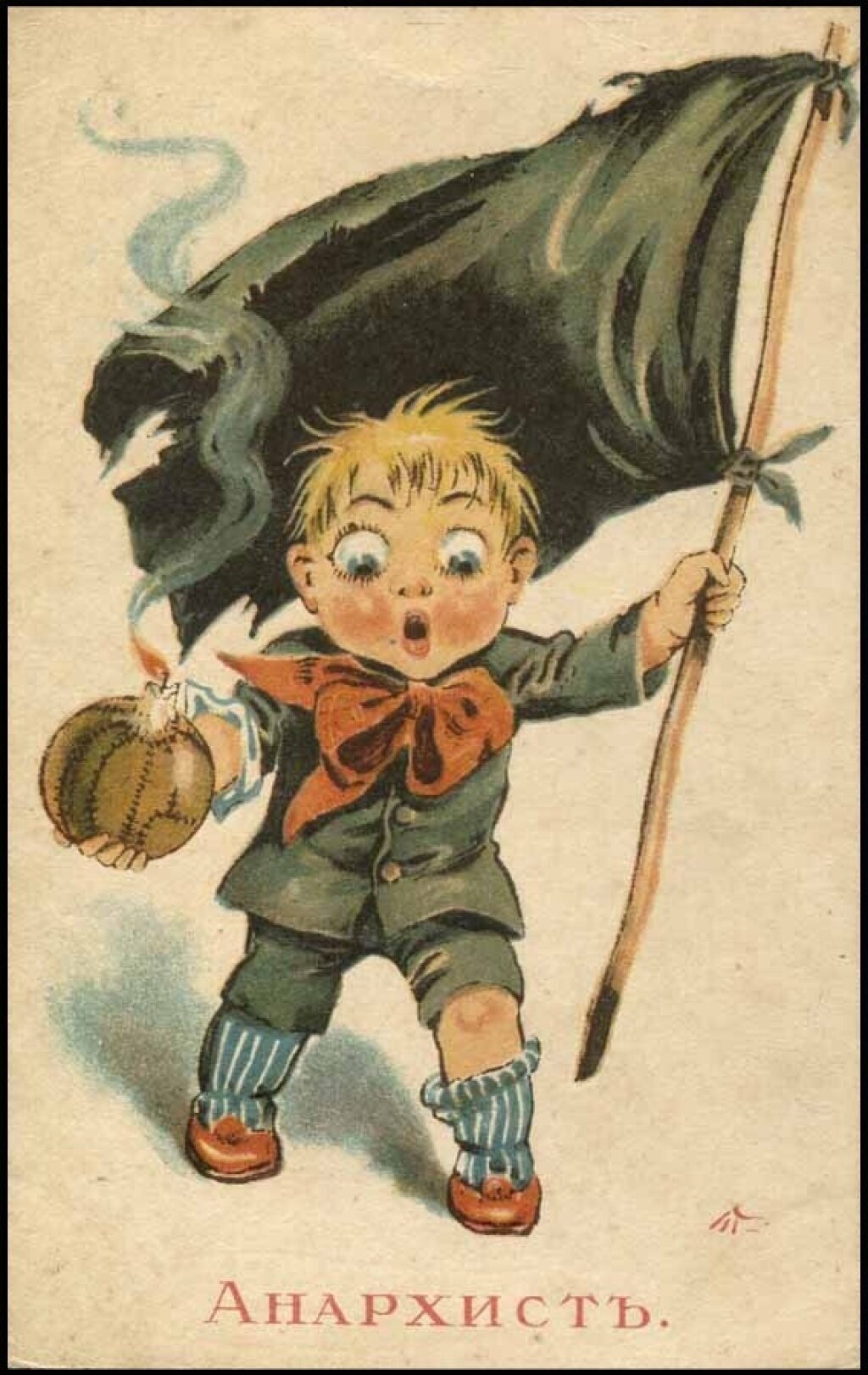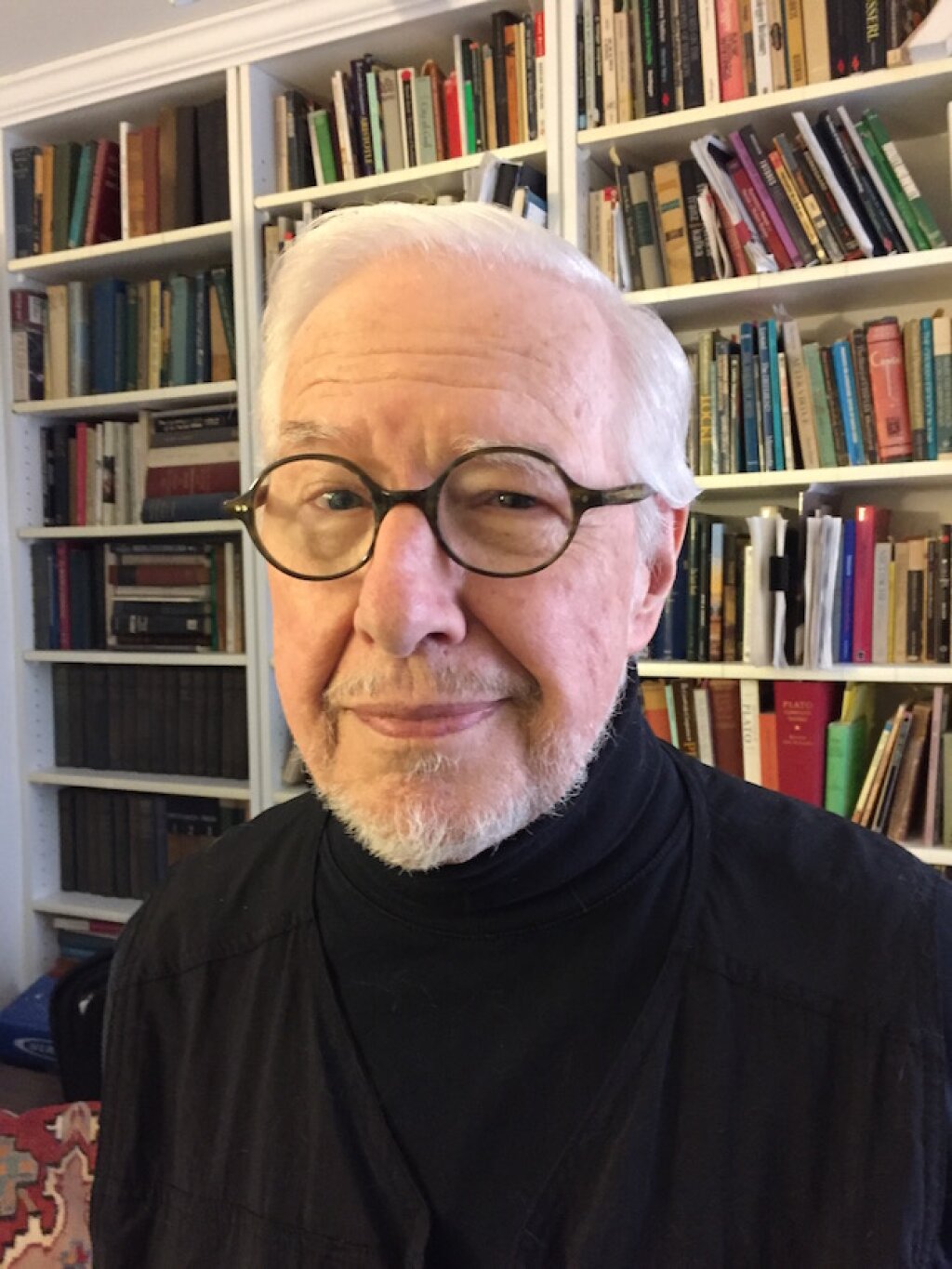William Whitham is a Lecturer in the Committee on Degrees in Social Studies at Harvard University. This post shares some key findings of his recent article, “Lenin, the Anarchist? A Constructive Misinterpretation,” published in Fall 2023 in Kritika: Explorations in Russian and Eurasian History.
In 1917, Vladimir Lenin and the Bolsheviks were widely considered to be “anarchists.” This view was shared by many political groups across Russia and Europe: moderate socialists, liberals, conservatives, even true-believing anarchists. Some likened Lenin to Mikhail Bakunin, the famous revolutionary and rival of Karl Marx. Others characterized the Soviet Republic, declared in October, as an anarchist regime.
From our perspective today, such claims seem not only false, but bizarre. Lenin lived and breathed Marxism. He had no patience for anarchists, who in his view denied the necessity of political struggle, party organization, and socialized production. Once in power, the Bolsheviks built a massive party-state that sought to intervene in every aspect of life, enshrined Marxist teachings, and made Russian anarchists particular targets of persecution.
So why did many observers confuse Bolshevism and anarchism, for a time? What, if anything, was illuminating or consequential about this misinterpretation? Understanding the mirage of “anarcho-Bolshevism” requires a look backward.
When the First World War erupted in August 1914, social-democratic parties and trade unions in belligerent European countries largely supported their governments’ respective military efforts. After fleeing to Switzerland, Lenin disavowed European socialists, writing that they had accepted “bourgeois reformism,” “class collaboration,” “bourgeois chauvinism,” “bourgeois parliamentarism,” and “bourgeois legality.”
These compromises, Lenin raged, had made a mockery of socialism. The very word “socialism” was now empty. He chose an alternative label, reclaiming the “old Marxist name of communists.” Looking forward, he hoped that the “national” and “imperial” war among the great powers would be converted into a civil and revolutionary war. He invoked the Paris Commune of 1871, the ill-fated municipal uprising analyzed by Marx in The Civil War in France, as a model.
Lenin’s charge of moderation was partly justified. By 1914, European social democracy had indeed become more “reformist” than “revolutionary.” By and large, the international socialist movement was law-abiding. It was generally committed to civil liberties, mass political organization, and the prudent use—rather than the overthrow—of existing state institutions.
But in condemning social democracy as inadequately radical, Lenin unwittingly echoed the anarchists: the strident revolutionaries who stood to the left of the social democrats and ritually abused them.
For decades, European anarchists had more or less said what Lenin was now saying. They contended that social democracy did not challenge “bourgeois” parliaments, states, and markets, but instead shored them up. They styled themselves “communists” (often “libertarian” or “anarchist” communists), a term social democrats avoided. And they called for the Commune to be imitated, whereas social democrats largely treated it as a heroic but doomed revolt.
In Lenin’s view, European social democrats were apostates who had abandoned “true” Marxism. But, to European social democrats, Lenin and other revolutionary socialists were the renegades. They were labeled and treated as such. “We were told that only an anarchist could preach such things, and virtually war was declared upon us,” Grigorii Zinoviev later recalled.
Upon his return to Russia after the February Revolution of 1917, Lenin made more unorthodox pronouncements. He called for the “abolition” of existing state institutions and ruled out any participation in the Provisional Government. The Bolsheviks combined this formula with radical slogans for peace, land, and workers’ control.
As a result, many political observers across Russia and Europe labeled the Bolsheviks “anarchists.” Although moderate socialists, liberals, and conservatives often applied the word abusively, there was something to it. As the anarchist Vsevolod “Volin” Eikhenbaum remembered, the Bolsheviks employed “watchwords that, until then, were precisely characteristic of anarchism.” The accusation of anarchism continued even after the Bolsheviks took power.
Of course, Lenin insisted on the formation of a new revolutionary regime. He argued that the people should create a soviet “state” to oversee an immediate peace and the nationalization of all land and banks. But the notion that the soviets could themselves constitute a genuine political authority sounded, to Nikolai Sukhanov (and to many anarchists in Russia and abroad), like an anarchist fantasy, like a vision of totally independent communes and workers’ councils. In December 1917, Lenin jotted down notes that suggested a need to correct the Bolsheviks’ own “anarchism.”
To complicate matters, Russian anarchists were generally supportive, although they viewed the supposedly “moderate” Bolsheviks with some suspicion and resolved to push them still leftward. Anarchists worked with the Bolsheviks during the July Days, the coup d’état of October 1917, and the dissolution of the Constituent Assembly of January 1918. Even after the crackdown on anarchists in Moscow in April 1918, many continued to liaise with the regime. Abroad, anarchists were among the Bolsheviks’ most vocal admirers well into the Russian Civil War.
Over and over, Lenin pedantically explained that his politics were impeccably Marxist. However, his reading of the master was idiosyncratic. He made much of Marx’s few, obscure comments about “the state,” “communism,” and “the dictatorship of the proletariat,” which social democrats had rarely discussed. He obsessed over Friedrich Engels’ comments on “the state” in a March 1875 letter to August Bebel, which was not published until 1911. He called for a repetition of the Commune (for most social democrats, a tragedy) and praised Marx’s Civil War in France (an awkward text). “The restoration of the true teachings of Marx on the state,” Lenin complained in State and Revolution, written in summer 1917 and published in 1918, required theoretical “excavations.”
As the civil war drew to a close and the party-state repressed rebels at Kronstadt and peasant guerrillas across the country, it became harder to imagine that Bolshevism and anarchism had anything in common. Increasingly, Soviet writers lambasted “petit-bourgeois” anarchism, while anarchists framed Bolshevism as an aberration (“state socialism” or “authoritarian socialism”) born of Marxism. A neat division between the two became almost axiomatic for later observers.
This framing obscured a paradoxical truth that was briefly revealed amid the political confusion and transformations of the revolutionary era. Despite countless theoretical and tactical differences, Lenin and most anarchists in Russia and in Europe had much in common. They sought the overthrow of “bourgeois” order, mass socialization of property, and indefinite terror against “counter-revolutionaries.” Both Bolsheviks and anarchists envisioned a political community that, by virtue of being wholly identified with “the people,” would not be a “state” at all. In some ways, the Soviet Republic institutionalized anti-statism—and thereby betrayed it, in the eyes of anarchists.
The mirage of “anarcho-Bolshevism” was also constructive. The Soviet Republic could only be established amid an “anarchy” of popular mobilization, law-breaking, and utopian expectation. Fantastic conflations of subversion and order, freedom and dictatorship, society and state were instrumental in solidifying Bolshevik rule—and communist rule across the globe throughout the twentieth century. Russian anarchists, though few in number, played notable roles in supporting a regime that eventually co-opted or crushed them. As Emma Goldman admitted in 1924, they became the victims of “the formidable machine which they themselves had helped to create.”
In power, Lenin fretted about “anarchism,” about which “Ilyich and I often talked,” as Nadezhda Krupskaia recalled. He saw its supposed attributes—indiscipline, disorganization, spontaneity—everywhere, including among the Bolsheviks. Amid the suppression of the Kronstadt revolt during the Tenth RKP(b) Congress of March 1921, he fumed at the pervasive influence of “the petit-bourgeois anarchist element.” He deemed it “the most dangerous enemy of the proletarian dictatorship.” Was it also a dangerous friend?



